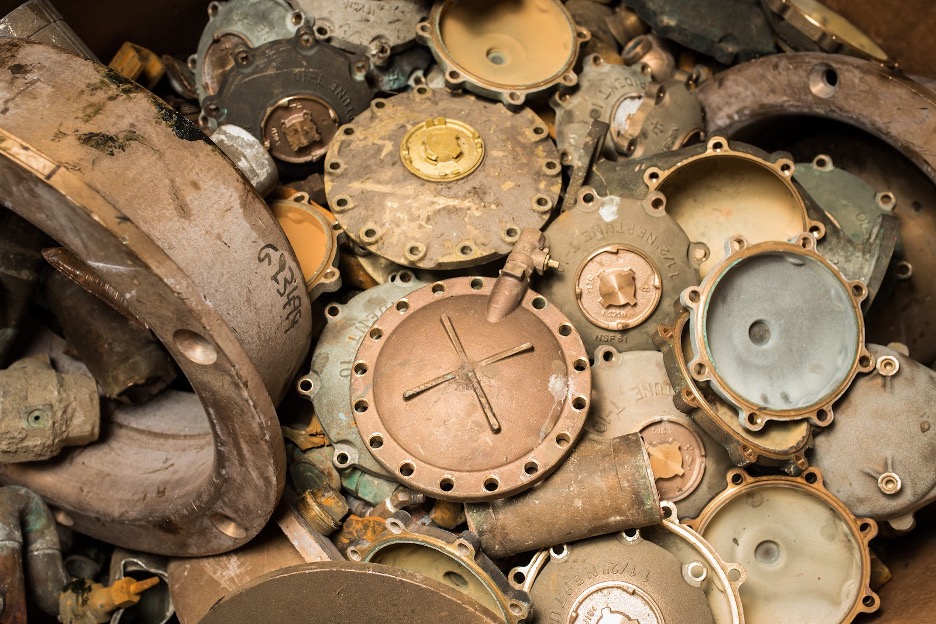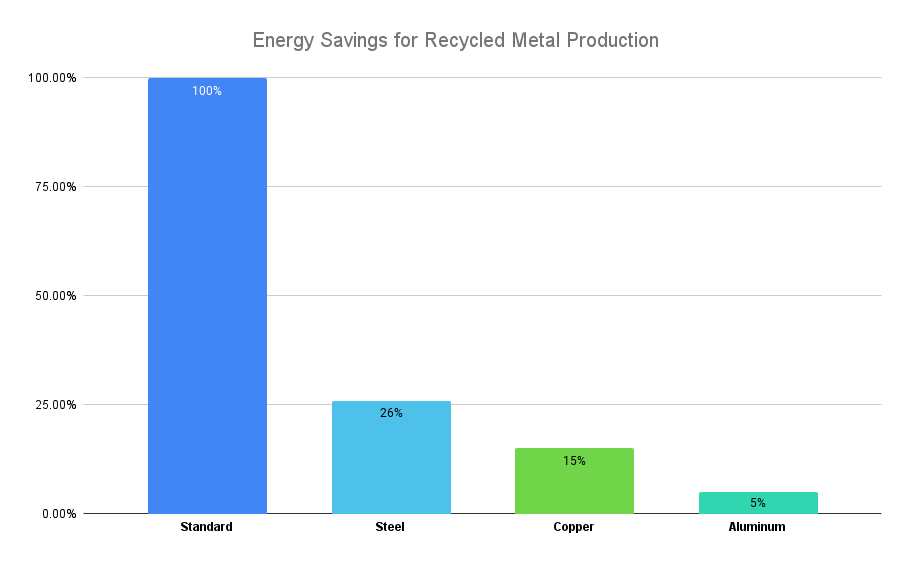
Global demand for metals is surging, driven by their essential role in critical industries such as construction, automotive, and electronics. Given their widespread use and the finite nature of metal resources, sustainable resource management is more crucial than ever.
In response to growing concerns about environmental degradation and resource depletion, scrap metal recycling has become a vital strategy. This approach alleviates the severe environmental impacts of traditional mining and drives the transition towards a circular economy.
In this blog, we explore the essential role of metal waste recycling in the circular economy, highlighting its environmental, economic, and social benefits. We will also explore cutting-edge technologies in the metal recycling sector and examine the specific processes employed at Richmond Steel Recycling to contribute to sustainable practices.
As a premier scrap metal recycler with more than 50 years of experience, we recognize the significant impact of scrap metal recycling on our economy. By reintegrating discarded metals into the production cycle, scrap metal recycling preserves natural resources and bolsters the economy through cost reductions and job creation.
Before we discuss scrap metal recycling and the circular economy, let’s familiarize ourselves with the concept as a whole. The circular economy is a progressive approach to economic development that benefits businesses, society, and the environment. Unlike the traditional 'take-make-waste' linear model, the circular economy is designed to be regenerative.
In the usual linear approach, we extract resources, use them, and dispose of them, which puts a lot of pressure on our natural resources. On the other hand, the circular economy aims to make the most of resources. The core principles of a circular economy involve reducing waste, reusing resources, and recycling materials to extend products' life cycles.
This economic model emphasizes the importance of sustainability by ensuring that products, materials, and resources remain in use for as long as possible. Sustainability in modern economics is a necessary shift to maintain and manage limited global resources, ensuring economic stability by reducing costs and dependency on raw material extraction.
Recycling scrap metal is fundamental to closing material loops. It reintroduces valuable materials back into the production cycle, reducing the need for new raw material extraction and promoting resource efficiency. Recycled metals provide the same quality as virgin materials but with significantly lower energy consumption and environmental impact.
Here’s a more in-depth exploration of the advantages of scrap metal recycling:
Scrap metal recycling offers significant economic advantages. Using recycled metals can lead to substantial cost savings compared to producing new metals from scratch.
This practice cuts down manufacturing costs and creates more jobs in the recycling and manufacturing industries. For example, recycling facilities often provide more jobs than landfill sites, boosting economic stability and supporting local manufacturers using materials from within the country.
This increase in jobs helps the community and boosts the overall economy by increasing government tax revenues and raising wages across various sectors.
The environmental benefits of scrap metal recycling are equally compelling. According to the Recycled Materials Association (ReMA, formerly known as ISRI), using recycled aluminum saves up to 95 percent of the energy required for producing new aluminum from virgin materials. Similar savings are seen with metals like copper and steel, which save 85 percent and 74 percent, respectively.

These energy savings contribute to significant reductions in greenhouse gas emissions. Furthermore, recycling metal reduces the environmental impact of mining and material extraction, conserves natural resources, and supports sustainable energy use. If all those environmental benefits weren’t enough, recycling metals also plays a crucial role in waste management by reducing landfill use.
Scrap metal recycling fosters community involvement and education on sustainability. It provides health benefits by reducing pollution and improving air quality, creating a healthier environment for communities. Engaging the public in recycling efforts educates them on the importance of resource conservation, making them active participants in the drive towards a sustainable future.
Recent advancements in metal recycling include the development of advanced sorting techniques and the concept of urban mining, where materials are reclaimed from old buildings and used products rather than natural sources.
These innovations help streamline the recycling process and enhance resource recovery efficiency. Moreover, the push towards circular supply chains ensures that materials are recycled and reused within the industry, minimizing waste and maximizing resource utilization.
As we mentioned, the Richmond Steel team continues to focus on sustainability and contributing to the shift towards a circular economy. So, how do we recycle the scrap metal, and where does it go?
A key element of our recycling process involves using an electric arc furnace (EAF). By generating intense heat through an electric arc, the EAF can reach temperatures up to 3,000°C to melt large quantities of scrap efficiently.
This technology conserves energy by utilizing recycled materials instead of virgin ores and significantly reduces greenhouse gas emissions and other pollutants compared to traditional blast furnaces. Its flexibility in adjusting metal compositions also allows for producing various steel grades to meet diverse industrial needs.
The scrap steel recovered from our demolition services plays a crucial role in our recycling efforts. Once processed in our EAF, this steel finds new life through rebar and steel beams used in new construction projects. This cycle of reuse not only conserves resources and reduces waste but also supports the construction industry with a reliable supply of sustainable building materials.
By integrating scrap steel from demolition into manufacturing essential construction components, we close the loop in the material life cycle, embodying the principles of a true circular economy. This practice is not just about recycling; it's about transforming waste into valuable resources that promote further development and innovation in the construction sector.

Working with experienced recyclers like Richmond Steel can contribute significantly to the global move toward a circular economy. By ensuring metals are recycled, you’re supporting economic growth and environmental preservation, positioning your business as a leader in sustainability.
By embracing metal recycling, companies can enjoy cost savings, meet consumer demands for responsible practices, and participate in more environmentally friendly practices. This comprehensive approach to integrating scrap metal recycling into the circular economy highlights its undeniable benefits and why it should be adopted globally.
At Richmond Steel, we are proud to use cutting-edge technology like the electric arc furnace to deliver superior recycling services while promoting sustainable construction practices. Talk to our knowledgeable team now if you want to learn more about how Richmond Steel Recycling can support your next project with environmentally responsible solutions.